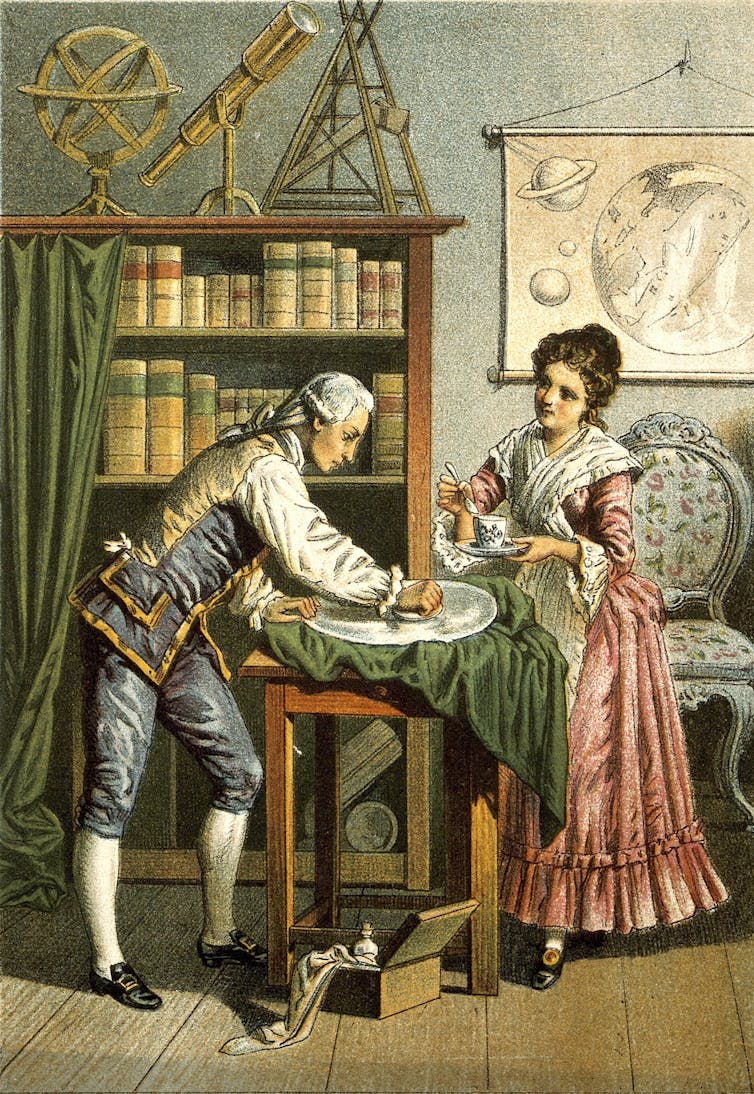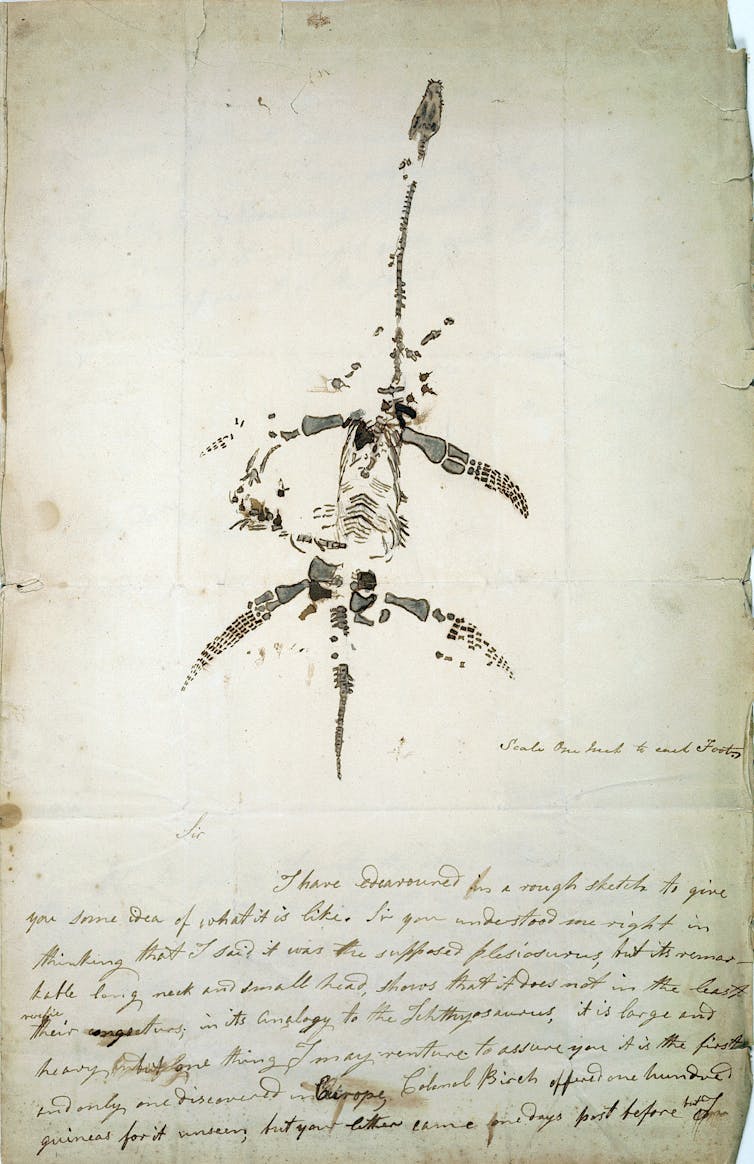
What images does science conjure up in your mind?
You may well be visualising a laboratory, equations scrawled on a blackboard. Figures are surrounded by glassware filled with coloured liquids. Maybe someone, with a slightly furrowed brow, is hunched over a microscope.
But what this scene fails to convey is that science isn’t about labs, equipment or highly trained professionals. It’s not even the body of knowledge locked away in great minds or archived within text books and journals.
Instead, it’s about having a curious, creative, critical and evidence-based mindset. Which means anyone who uses the scientific method can and should consider themselves a scientist. Indeed, many a discovery has been made by amateur scientists.
They’re still helping to shape science. In January 2023, a new study confirmed the theory of amateur archaeologist Ben Bacon who concluded 20,000-year-old cave markings were a lunar calendar. He spent hours decoding the primitive writing system, which may pre-date equivalent record-keeping systems by at least 10,000 years, before he approached a team of academics.
Out of this world
Astronomy has a long history of encouraging input from nonprofessional scientists. Brother and sister team William and Caroline Herschel are among the most well known. Originally from Hanover, German, and trained as musicians, the siblings moved to England and eventually lived in Bath. During the 1770s William worked as a choirmaster while his sister kept his house.
After a day’s work William would spend late nights voraciously reading up on astronomy. Breakfast conversations with his sister soon infected her with his passion. Together, the Herschels taught themselves to make their own telescopes.
Before long their prowess as telescope makers eclipsed their musical reputations. Eventually, the astronomer royal, who advised the king on astronomical matters, deemed their telescopes superior to those at the Royal Observatory in Greenwich.
The siblings went on to make major discoveries, using their telescopes. In 1781, William was the first to spot Uranus, followed by several galaxies. Meanwhile, Caroline found eight comets, a dwarf galaxy and 14 nebulae (giant clouds of dust and gas in space).

In the intervening 250 years, others followed the trail blazed by the Herschels. With no formal education Clyde Tombaugh taught himself to make telescopes. His creations landed him a job at Lowell Observatory in Flagstaff, Arizona, where he discovered Pluto in 1929. Thomas Bopp noticed a smudge when he peered down a friend’s scope, which was later named Comet Hale-Bopp.
On the very same night, (July 22 1995) unemployed physicist Alan Hale spotted the comet, so he shared the glory. Since then the number of discoveries, largely of planets outside of our solar system (exoplanets), by backyard astronomers have rocketed due to citizen science projects and the thousands of data sets made publicly available by space agencies.
Down to Earth
Back down on the ground there is still plenty for the amateur to explore. Mary Anning is one of the most notable amateur Earth scientists.
In the early 19th century, she unearthed fabulous fossils on the beaches of Lyme Regis, Dorset. Despite her limited education, she devoured as much of the scientific literature as she could get her hands on and produced detailed technical drawings to record her finds.
Unfortunately, the influential Geological Society of London did not allow female members. So Anning was forced to sell her finds to “gentlemen” geologists who passed her work off as their own.

Finding traces of a long dead creature gives people a taste of the thrill that any scientist feels when their data reveals something new. Since Anning trod the beaches of the Jurassic coast many an amateur palaeontologist has followed in her path.
A wonderful example is fossil hunters Marie Woods and Rob Taylor who spotted a metre-long dinosaur footprint – the largest ever discovered – in 2021 on the Yorkshire coast.
It’s not just the ground under our feet that has proved fruitful for budding Earth scientists. Our atmosphere is also a fertile area of research. Today, cheap air sensors, microprocessors and mobile phone networks allow anyone to use atmospheric monitors that feed into public access databanks, which are used for climate and pollution models.
But the first and most influential amateur climatologist was probably Guy Callendar, a steam engineer by profession.
From the 1930s and throughout the mid 20th century, he published papers describing models of how carbon dioxide was affecting and would affect our climate. At the time his work was met with major scepticism, largely because he didn’t have scientific qualifications and because CO₂ constitutes a fraction of our atmosphere: just 0.04%, up from 0.03% in the pre-industrial era.
So the climatologists of the time struggled to grasp how these tiny changes could drive the dramatic effects Callendar predicted. Nevertheless, his perseverance and robust analysis of the data eventually persuaded others to take the threat of CO₂ seriously.
Amateur scientists thrive where data, observations and objects can be collected without technical and expensive equipment. That’s partly why historically there were so many amateur palaeontologists and astronomers.
Today, there is no shortage of open-source data and cheap analytical equipment. The result is hundreds of projects that interested citizen scientists can get involved with, from surveying penguins in the Antarctic to cloud spotting on Mars.
Of course, access to equipment, data and even the ability to design an experiment does not a scientist make. You also need an open mind. Physicist and writer of the popular 1980s TV series Cosmos, Carl Sagan, once said:
In science it often happens that scientists say, “You know that’s a really good argument; my position is mistaken,” and then they would actually change their minds.
This attitude is central to any scientist’s mindset. It’s what distinguishes science from pseudoscience. A distinction beautifully made by an experiment, shown in the Netflix documentary, Beyond the Curve.
The show finishes with a elegant experiment designed by a flat-Earther to prove his point of view. When the inevitable results came in he adopts that furrowed brow and just repeats “interesting”.
The documentary credits roll there, so we don’t get to see his thoughts play out. But if his next words were “I guess I was wrong”, then he gets to call himself a scientist.
Mark Lorch does not work for, consult, own shares in or receive funding from any company or organisation that would benefit from this article, and has disclosed no relevant affiliations beyond their academic appointment.
This article was originally published on The Conversation. Read the original article.







